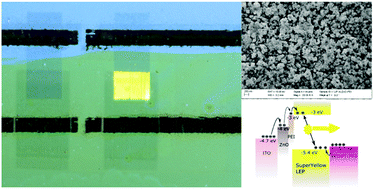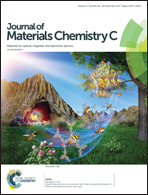ITO-free, inkjet-printed transparent organic light-emitting diodes with a single inkjet-printed Al:ZnO:PEI interlayer for sensing applications†
Abstract
Solution processing manufacturing is the key method to reduce the OLED device production cost. Furthermore, digital printing techniques such as inkjet printing provide the advantages of mask-free patterning, non-contact manufacturing and direct chip-integration. However, a complex layer structure consisting of ultrathin layers is typically required to obtain high device performance, which is difficult for inkjet printing manufacturing due to interlayer mixing, limited layer uniformity, and limited material availability. In this contribution, we introduce an ITO-free, inkjet-printed transparent OLED with a simple 4-layer structure via an inkjet-printable Al:ZnO:PEI interlayer. This is the first ITO-free, vacuum-free, fully solution-processed transparent OLED using the inkjet printing technique as the exclusive technique for electrode deposition and patterning. High emission brightnesses of 50 000 cd m−2 and 16 000 cd m−2 were achieved in a voltage-pulsed driving mode on ITO and silver nanowire embedded PEDOT:PSS bottom electrodes, respectively. In order to use the OLEDs for on-chip fluorescence sensing applications, the operational lifetime was also tested under a high emission brightness of ∼10 000 cd m−2. LT85 was achieved after 3000 pulses.



 Please wait while we load your content...
Please wait while we load your content...